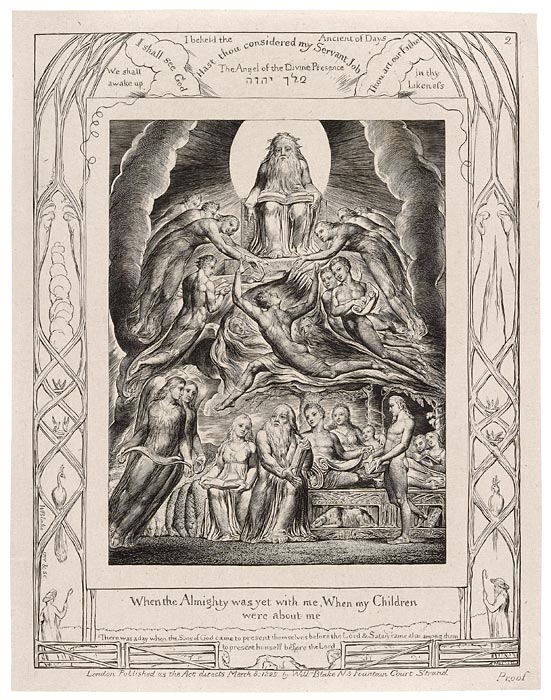
Job's tribulations engaged Blake's imagination early. A tempera painting called Job and His Daughters, executed about 1799 or 1800 for Thomas Butts, is an example. Butts also commissioned the watercolor series that you see behind you, which was produced between 1805 and 1810 and comprised nineteen drawings. In 1821, Blake borrowed them to copy for John Linnell. At that time two new drawings (pls. 17 and 20) were added, extending the group to twenty-one. In 1823, with Linnell's encouragement and financial support, Blake re-created the images as a series of magnificent engravings that were published in 1826. The border motifs were designed directly on the plate.
At his death, Blake was working on another brilliant series of engravings, this time devoted to Dante. Copies of that work are also in the Morgan's collections.
